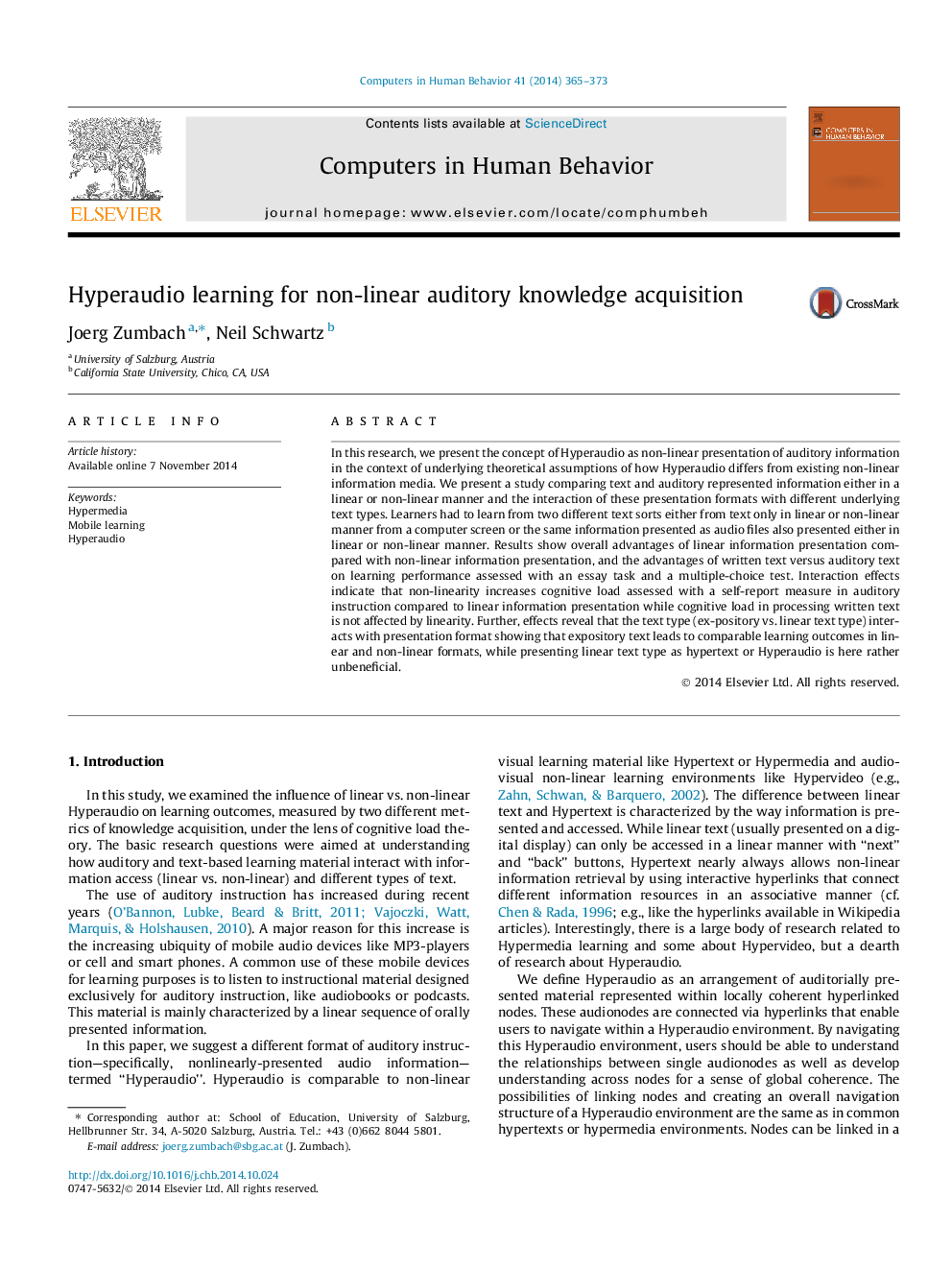| کد مقاله | کد نشریه | سال انتشار | مقاله انگلیسی | نسخه تمام متن |
|---|---|---|---|---|
| 350408 | 618443 | 2014 | 9 صفحه PDF | دانلود رایگان |
• Hyperaudio as non-linear presentation of auditory information is introduced.
• Interaction effects of modality, text format and text types were analyzed.
• Linear information presentation is better memorized than non-linear information.
• Written text leads to better learning performance than auditory text.
• Hyperaudio learning needs additional instructional support.
In this research, we present the concept of Hyperaudio as non-linear presentation of auditory information in the context of underlying theoretical assumptions of how Hyperaudio differs from existing non-linear information media. We present a study comparing text and auditory represented information either in a linear or non-linear manner and the interaction of these presentation formats with different underlying text types. Learners had to learn from two different text sorts either from text only in linear or non-linear manner from a computer screen or the same information presented as audio files also presented either in linear or non-linear manner. Results show overall advantages of linear information presentation compared with non-linear information presentation, and the advantages of written text versus auditory text on learning performance assessed with an essay task and a multiple-choice test. Interaction effects indicate that non-linearity increases cognitive load assessed with a self-report measure in auditory instruction compared to linear information presentation while cognitive load in processing written text is not affected by linearity. Further, effects reveal that the text type (ex-pository vs. linear text type) interacts with presentation format showing that expository text leads to comparable learning outcomes in linear and non-linear formats, while presenting linear text type as hypertext or Hyperaudio is here rather unbeneficial.
Journal: Computers in Human Behavior - Volume 41, December 2014, Pages 365–373
